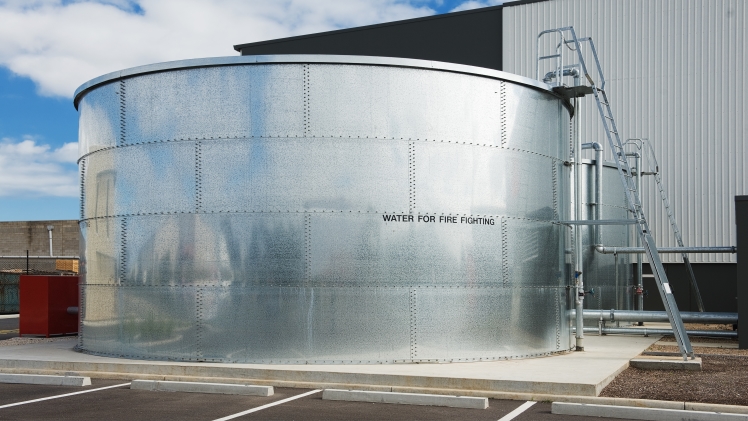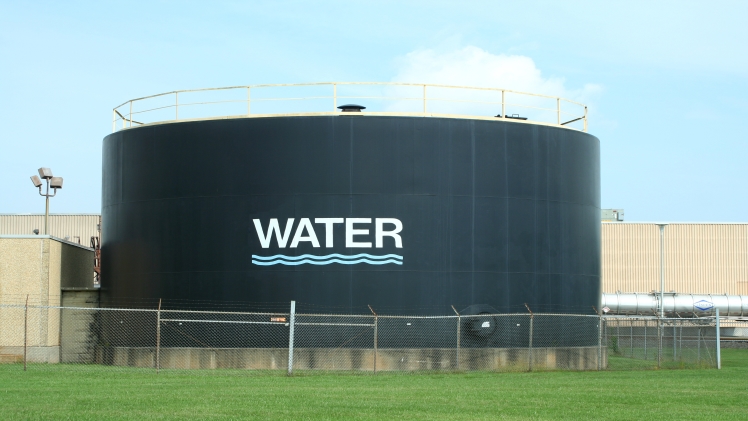Water tanks are essential if you live in a place where water supply can be a problem. These storage solutions can work great if you want to collect rainwater to reduce monthly bills.
There are various types of water tanks you can choose from, as they do come in various shapes, sizes, and materials. Each has its own pros and cons, but, eventually, what you’d want to be looking at will depend on various factors.
Below, check out the most common water storage options for household and commercial use, and how you can pick the best option for your property.
After you’re done reading the article, you may check out this company which says they have 1,745 tank options or other reliable brands. You’re sure to find what you need.
-
Polyethylene Tanks
Also known as plastic tanks, polyethylene tanks are relatively durable and budget-friendly. Apart from polyethylene, other materials such as polyvinyl chloride (PVC) can be used to make them. Being the cheapest option, this storage solution is perfect for homeowners who want to save on costs and need a fairly high-capacity tank.
-
Welded Steel Tanks
Like their close relatives, welded steel tanks are reliable water storage tools that can be used long-term and are highly versatile to fit both residential and commercial applications.
As another viable storage solution, welded steel tanks are typically fabricated on-site. Being made from metal, welded steel tanks are prone to rusting. A liquid coating is sprayed onto the steel to make it safe. If you intend to use water stored from these tanks indoors, consider buying the best water filters to ensure your family’s safety.
1. Corrugated Steel Tanks
Corrugated steel tanks are versatile water keepers that can be used by one household or a community. Made from strong corrugated steel, they come in a vast array of sizes, and can be custom-made to fit your needs. Whether used for rain collection, water storage, or fire suppression, corrugated steel tanks can provide reliable potable water supply for household use, irrigation, or wastewater treatment.
-
Fiberglass Tanks
Unlike metal, fiberglass tanks will not rust nor corrode. Fiberglass tanks are also resistant to high temperatures, making them versatile storage solutions not only for water, but for fire suppression, and irrigation, as well as wastewater treatment. Some solar water heating systems may use fiberglass water tanks mixed with other types of materials.
Another major draw for fiberglass tanks is their high strength to weight ratio, which is 12 times stronger as compared to steel.
-
Concrete Water Tanks
Unlike steel tanks, concrete water tanks can be made faster as the materials for them are widely available. These tanks, which are often used in farms and other remote communities, are fire-resistant and sturdy. They’re often mounted in an elevated area or constructed underground.
Things To Consider In Choosing The Best Tank
Choosing the ideal water storage tanks becomes less baffling with the following considerations:
-
How Are You Planning To Use It?
This is, perhaps, the most important consideration before buying or having a water tank installed.
When you’re planning to use the water for drinking, for instance, you’ll have to make sure that the container keeps it safe.
It may be best to avoid plastic tanks, as they’re prone to melting under high temperatures. Once melted, the plastic material can mix with the water inside it, causing a health hazard. If you’re planning to use water for outdoors, this shouldn’t be much if an issue.
-
What Size Of Tank Do You Need?
A good rule of thumb is to have a 5,000-liter capacity water tank in areas with regular rainfall. For households located in drier regions, a larger 10,000- liter capacity tank may be ideal. The capacity you choose will hinge on the size and shape of your house, or the available space on your yard.

-
Check Out The Materials Used
Water tanks generally come in the following materials:
-
- Steel or metal – This makes tanks durable and long-lasting, but also prone to rust and corrosion. They’re not great for properties located at the beachside.
- Polyethylene – Relatively cheap and sturdy, these often dark blue-colored plastic storage tools are better for properties near the ocean. Apart from polyethylene, these containers can also be made from polyvinyl chloride (PVC).
- Fiberglass – Rust- and chemical-resistant, these water tanks are made for extreme temperatures. These water keepers are best for outdoor and above-ground installation.
- Concrete – Tanks made from concrete are more common for agricultural and industrial applications. That’s because they’re resistant to rust and fire. They may be prone to algae growth and are extremely heavy.
Final Thoughts
Getting a water tank may require professional help, especially in figuring out how much water your household needs, and the pros and cons of each type and the material used.
Before getting one, don’t forget to ask your local water council and homeowners association as to the rules and regulations that apply in your location. You may need to submit documents and be subject to some restrictions in terms of location and size.

